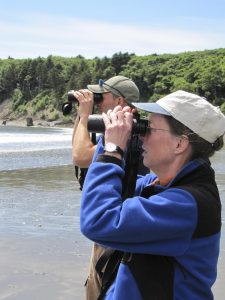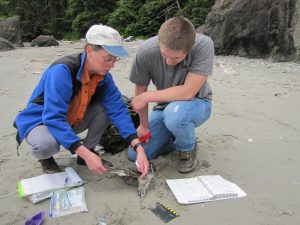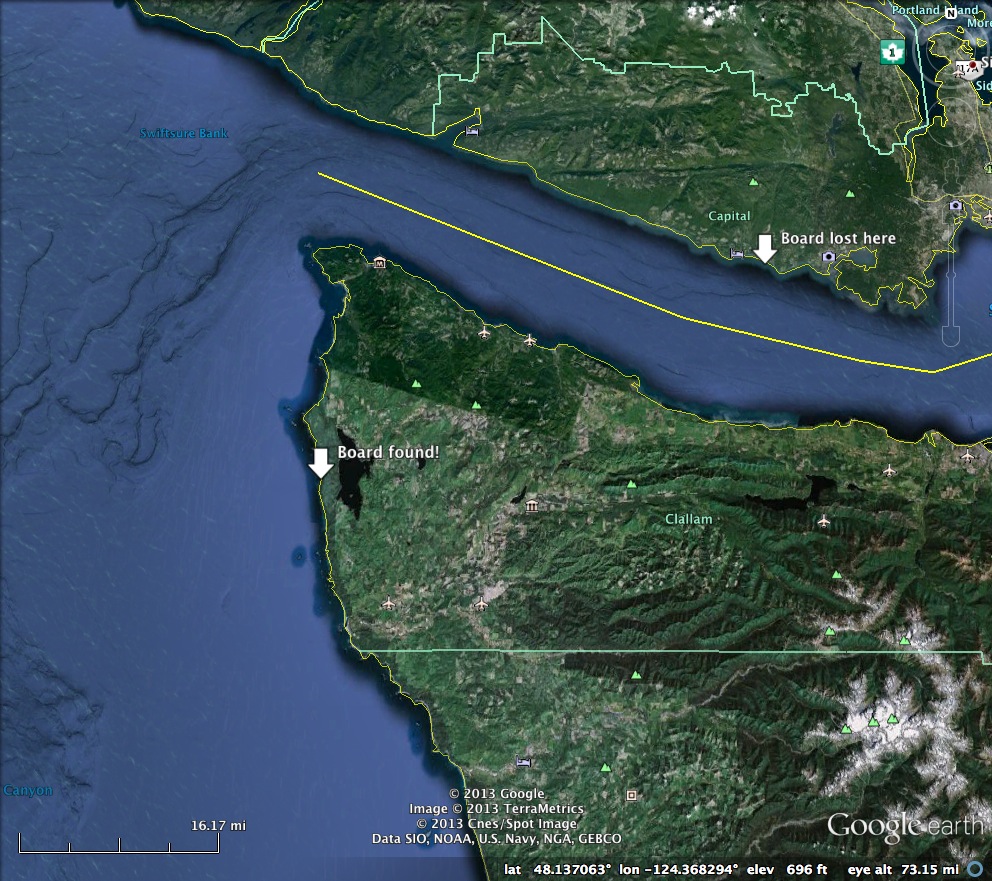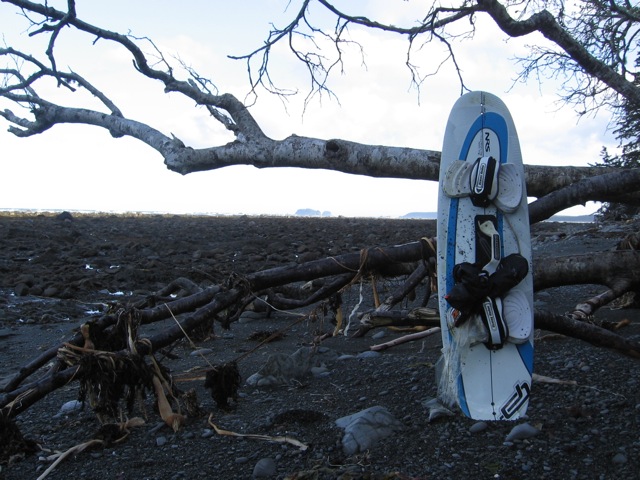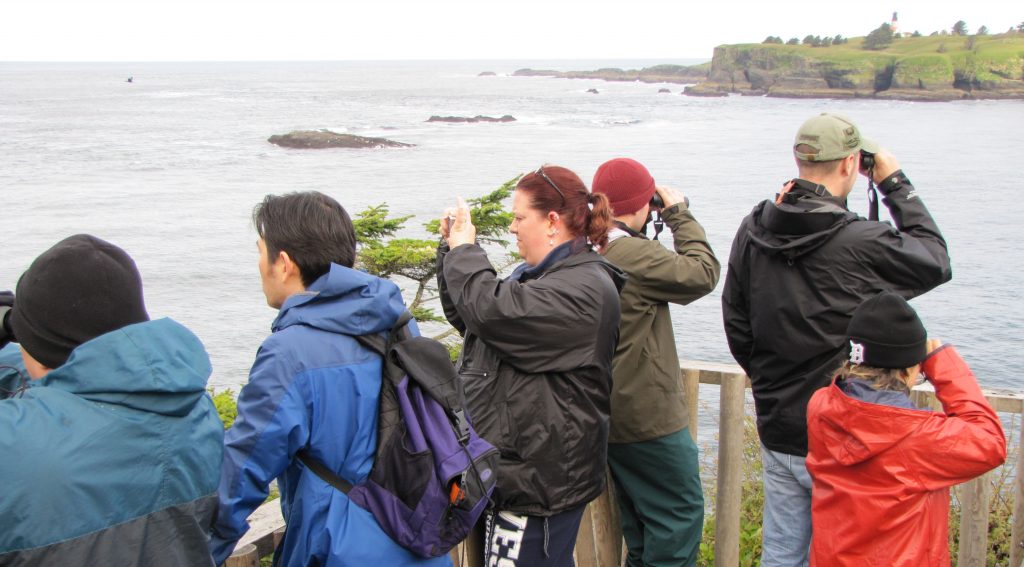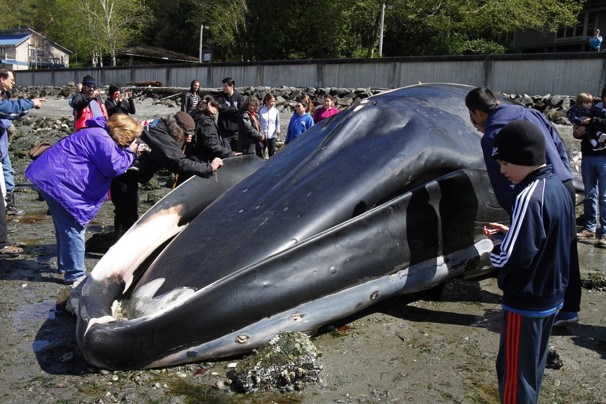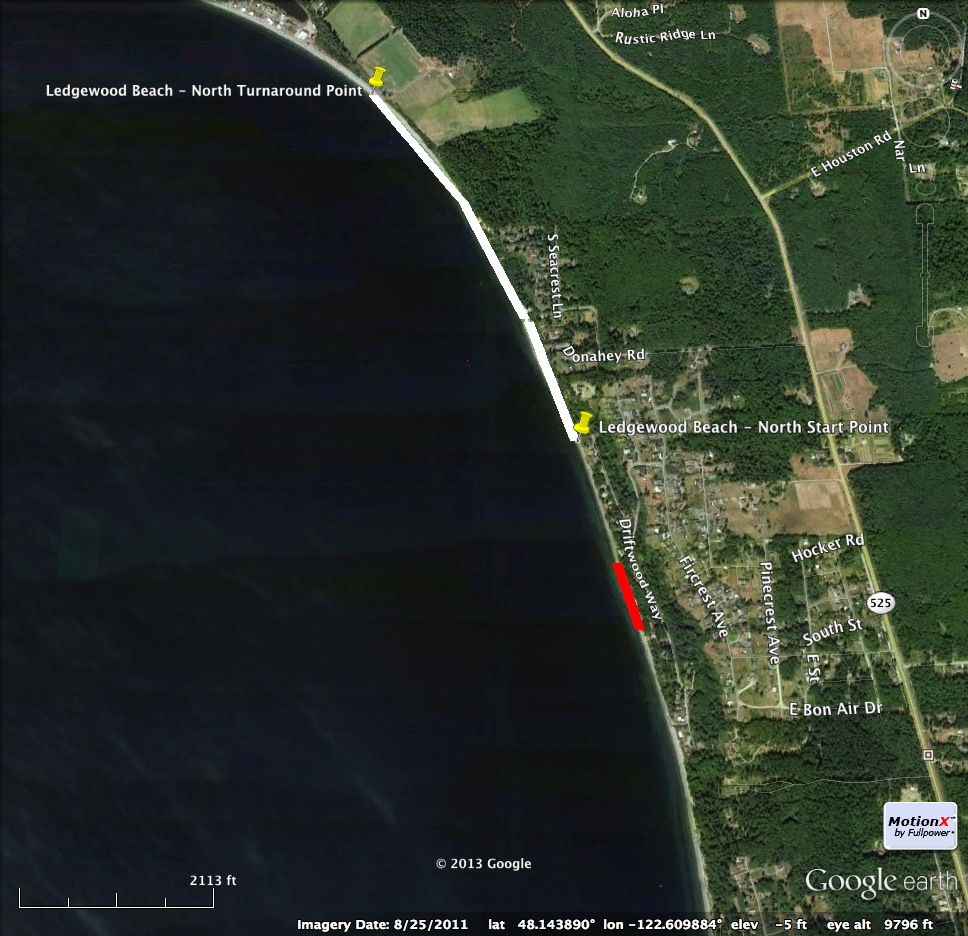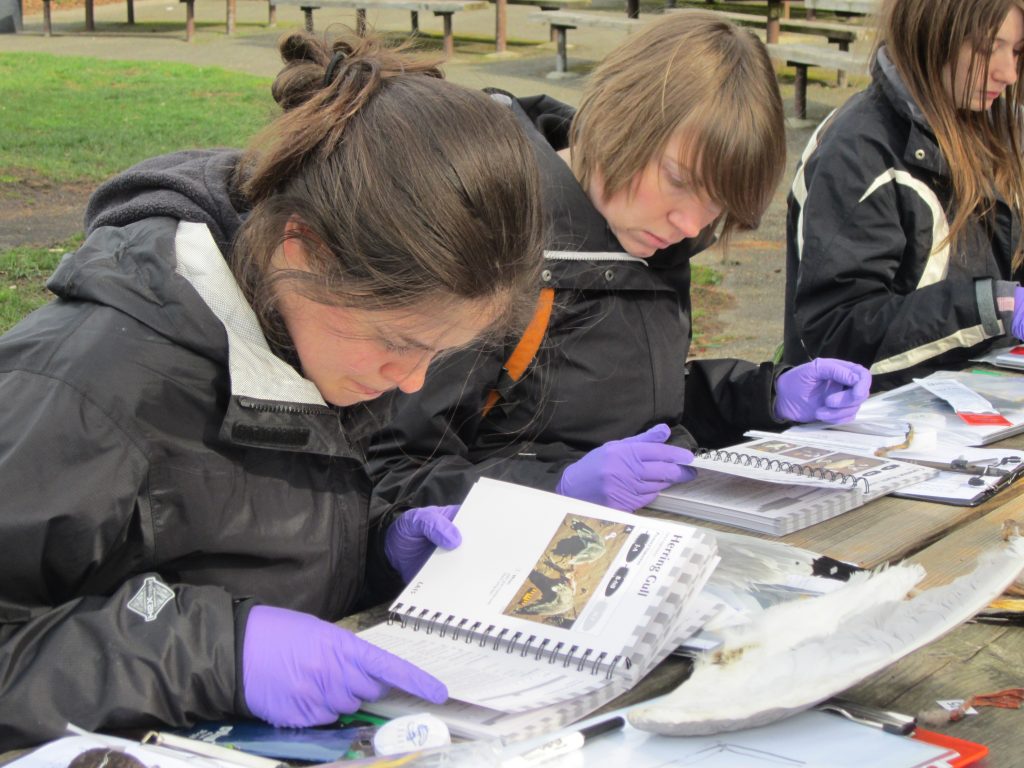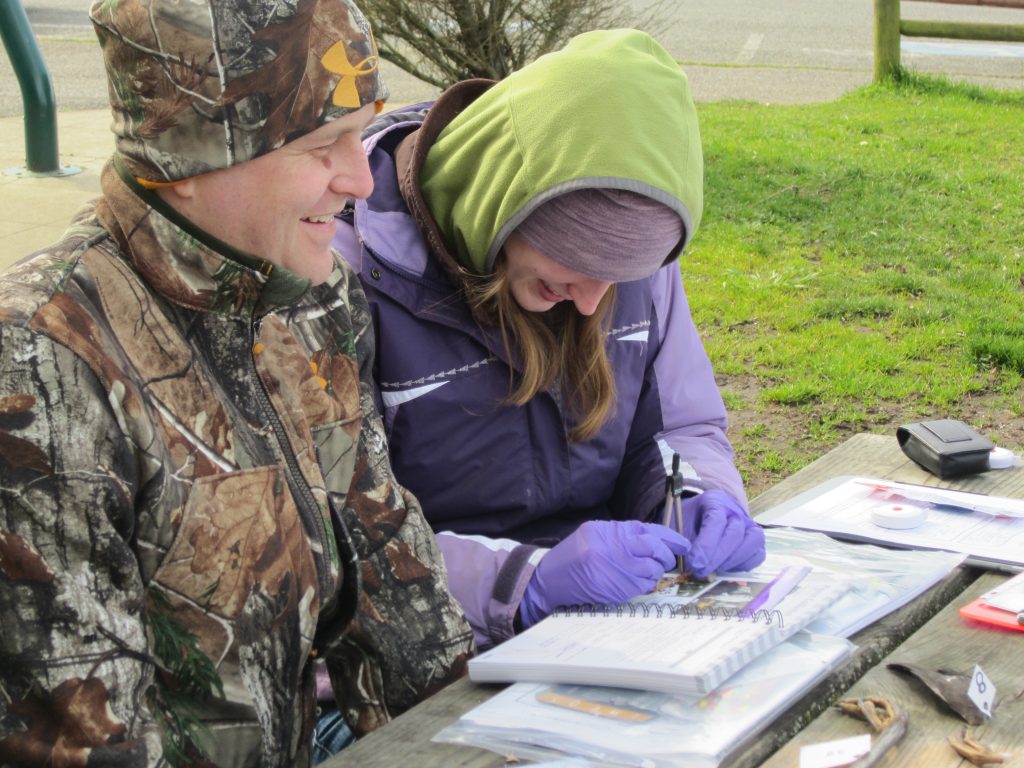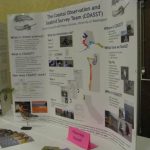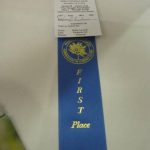Last Friday, Julia and Jane stopped in at the Quinault Division of Natural Resources in Taholah, Washington. Julia, wearing “both her hats” as an Associate Dean of Academic Affairs and Diversity at the College of the Environment and the Executive Director of COASST had a chance to hear from a host of Quinault Indian Nation resource managers including Joe Schumacker, Ed Johnstone, Daniel Ravenel, Heather May, Mark Mobbs, Larry Gilbertson and Janet Clark.
And we just had to head out the beach for a COASST survey with Daniel (a long-time COASST participant) and Nick Barry (tribal member and wildlife intern from Washington State University). With the sun out, we had ample time to take in the views, discover a “new foot type,” find a cormorant egg, and some debris items, all in a matter of hours. The only COASST find that day? Well, see if you can tell from the photo:


